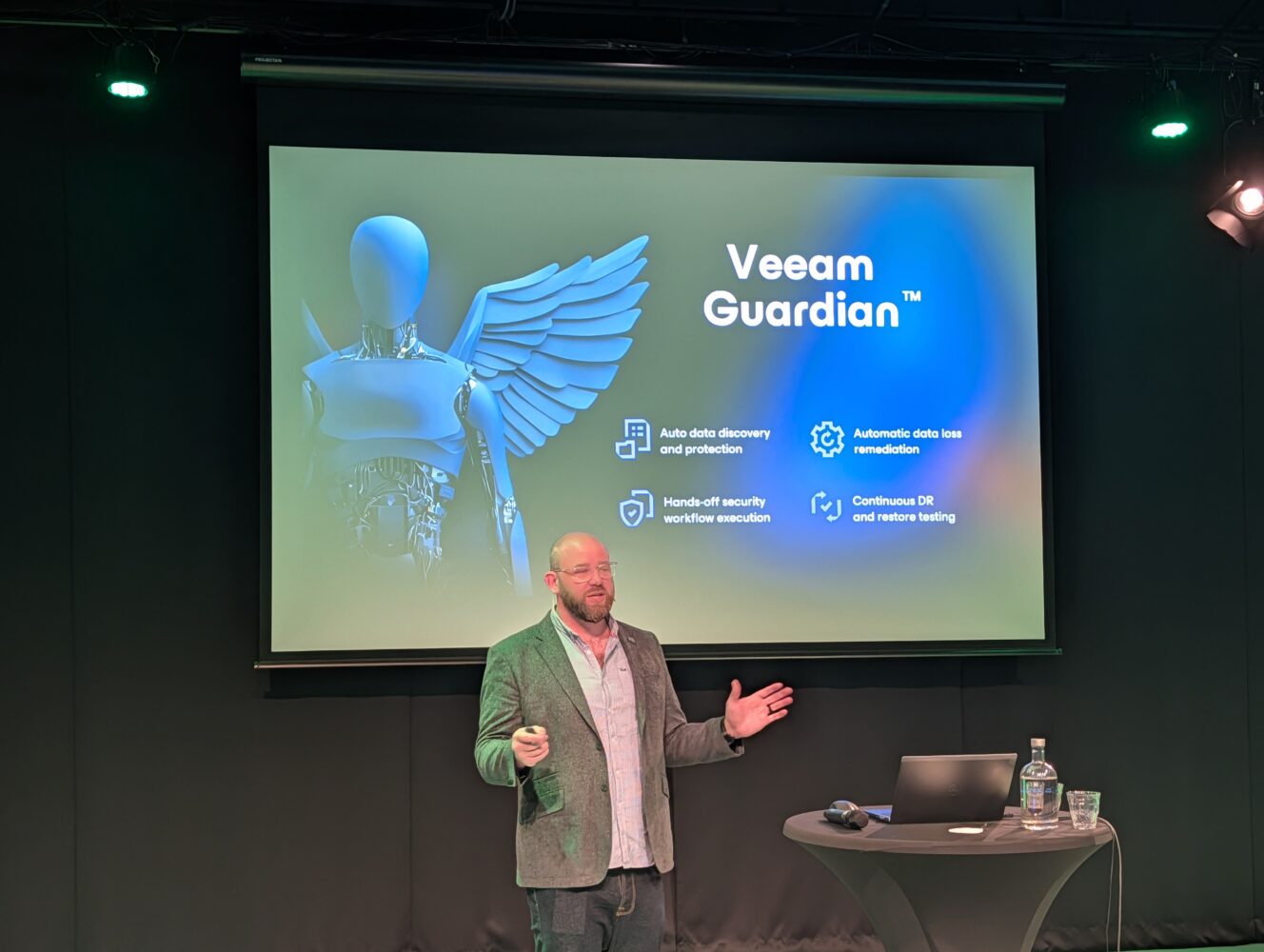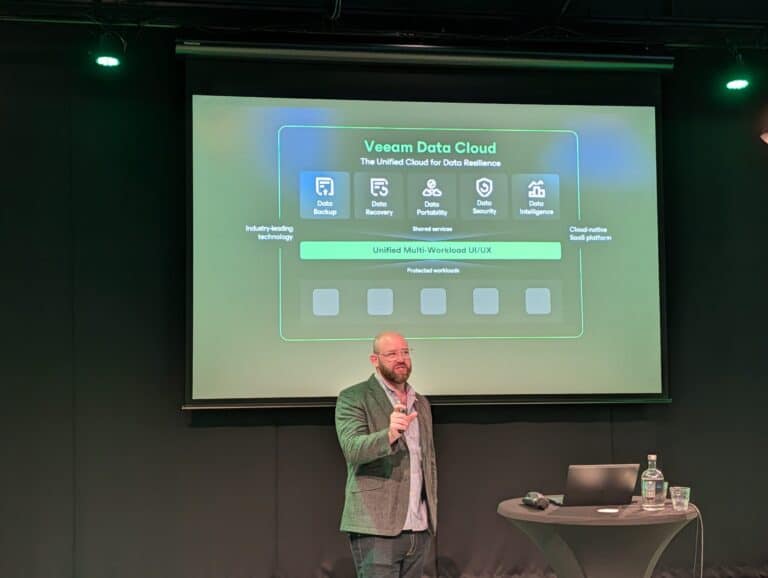IT infrastructure, data, and security have undergone tremendous developments in recent months. This requires a player like Veeam to innovate rapidly so organizations can remain resilient. The two core products, Veeam Data Platform and Veeam Data Cloud, are therefore being significantly expanded. We recently spoke with Field CTO Michael Cade about developments within the company.
Although data resilience has been preached within the industry for quite some time, it is by no means a given that companies will reach a mature level in this area. Based on independent research, Veeam has determined that only 1 in 10 organizations is truly mature in resilience. This can and must change, because the costs when things go wrong are significant.
From the core…
One of the main features Veeam has used to increase companies’ maturity has always been instant recovery. This allows organizations to restore virtual machines and workloads from a backup within minutes. Of course, this is all done as securely as possible during the boot and migration process, but there is also the option to perform a malware scan once everything is in order.
Cade explains that Microsoft Azure options have recently been expanded in this area. Companies can restore image-based backups directly from Azure Blob Storage to Azure virtual machines, regardless of whether the storage is managed via Veeam Vault or hosted independently. This enables faster disaster recovery and simplifies workload testing before migration.
For organizations that are reviewing their hypervisor strategy and partially moving away from VMware, Azure offers a reliable alternative for instant recovery. Azure virtual machines thus become an additional recovery destination, further expanding the list of supported platforms and giving organizations more flexibility in planning their disaster recovery strategy.
…to a new foundation
A key addition from the recent V13 release is the Software Appliance. This runs on Rocky Linux as a JeOS (Just Enough OS). If you look at the architecture of this appliance, you can see what makes it interesting. By removing certain components and sometimes even not including all binaries, the platform reduces its surface area. Implementation is quick via OVA for virtual environments and ISO for physical installations.
In combination with a new web-based management console, managing Veeam environments should now be much easier. The console bundles management functions and integrates data from VeeamOne monitoring, creating a single overview of backup tasks, protected workloads, and the overall infrastructure status.
Continuous protection and growth of SaaS services
On the other hand, we understand from Cade that Continuous Data Protection (CDP) will play a significant role in Veeam’s long-term strategy. In version 13, CDP supports physical and cloud-based Windows and Linux machines, creating a near-zero recovery point objective (RPO) for many more workloads. Previously, this functionality was limited to VMware VMs. The current expansion is a step toward universal replication between any source and target environment. Veeam envisions a future in which image-based backups can be continuously replicated between different locations, without platform boundaries.
In parallel, Veeam is further expanding its Software-as-a-Service (SaaS) portfolio. The Veeam Data Cloud now supports Microsoft 365, Azure workloads, Salesforce, and Entra ID, with AWS support coming soon. Microsoft 365 protection in particular is growing rapidly, driven by rising demand for SaaS-to-SaaS backup. The platform protects Exchange, OneDrive, Teams, and, later this year, Planner, providing complete coverage for collaboration data.
For organizations that prefer not to manage their own infrastructure, Veeam Vault offers immutable, cost-efficient storage with no egress fees. This service simplifies disaster recovery within Azure and helps companies meet data retention and immutability requirements.

Smarter protection with AI
AI is playing an increasingly prominent role within the Veeam ecosystem. To make AI more visible and functional, the company introduced the generative AI assistant Veeam Intelligence in early 2024. This chatbot can ask technical questions using natural language. It can also generate reports based on VeeamOne data.
In addition, machine learning algorithms are increasingly being used within Veeam to analyze backup data for malware patterns and indicators of compromise, enabling early detection of potential ransomware activity. These initiatives are part of the broader Veeam Guardian program, which uses AI to understand workloads better, increase security levels, and automate recovery actions. Guardian clearly demonstrates Veeam’s ambition to evolve from reactive protection to proactive resilience, where intelligent automation is an essential part of data security.
The increasing urgency of resilience
All these adjustments and innovations are aimed, in one way or another, at addressing the rapidly evolving threat landscape. Cyberattacks, particularly ransomware, continue to increase in frequency and complexity. This is not matched by the observation that the level of cyber resilience leaves much to be desired.
New regulations are forcing organizations to face this reality. NIS2 in our region requires demonstrable proof that backup and recovery procedures are functioning effectively. Testing and validation are no longer optional choices, but legal obligations. Moreover, the responsibility extends to the highest level: audit results can lead to the withholding of bonuses or even financial and legal sanctions. The urgency to build real operational resilience is therefore greater than ever.
With that understanding and awareness, there is hope that a change will come. Then, with a solid platform for data resilience that offers measurability and reliability, there will be an option ready to provide support. In any case, we are curious to see what Veeam has in store for the future.
Tip: Veeam revamps backup infrastructure with software appliance
